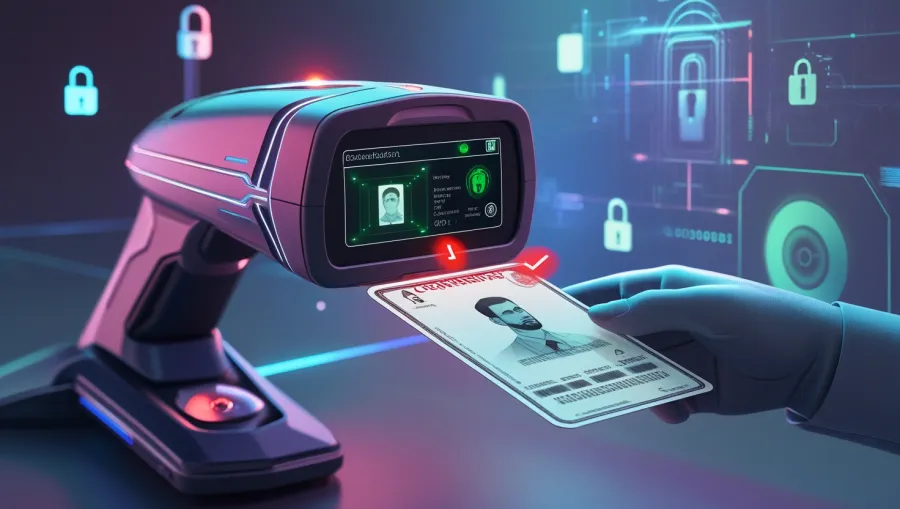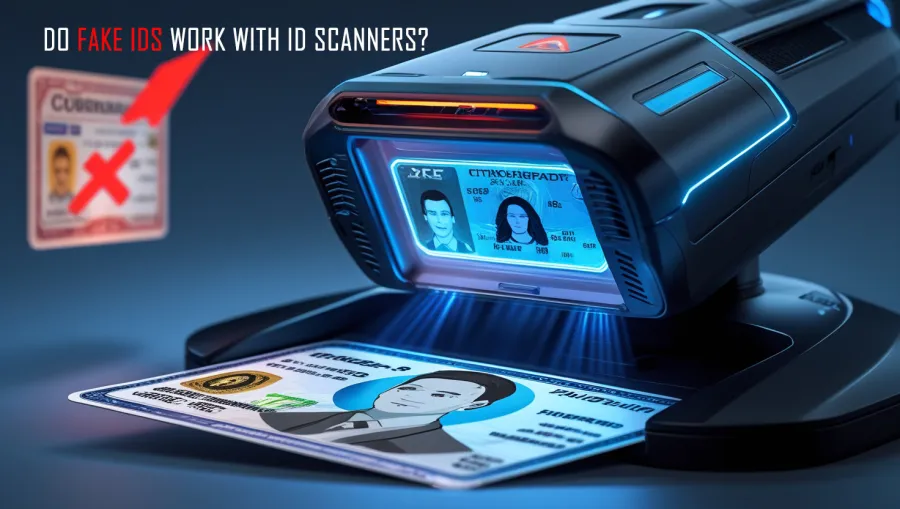Overview
Fake IDs have always existed, most commonly used by people who try to get through age gates for alcohol, tobacco, or even restricted places. Simply speaking, Fake IDs are illegal copies of identification documents that appear to be real government-issued IDs. Even though there may be much debate surrounding the efficacy of such identification cards, the fact remains that they raise concern regarding modern ID scanners, and whether modern ID scanners can detect fake IDs.
As technology progresses, the question becomes increasingly pertinent: how advanced are scanners today, and do fake IDs still manage to slip through, or has technology risen to a level where even the most meticulously crafted counterfeits stand no chance?
Understanding ID Scanners
To address this concern, it is important to consider how ID scanners work. There are a variety of ID scanners available today, from basic scanners that read basic barcodes to sophisticated models that can read a plethora of security features. In general, ID scanners tend to read the barcode or magnetic strip located on the back of a driver’s license or ID and extract encoded information.
Scanners that are sophisticated can utilize Infrared (IR), Ultraviolet (UV), or white light to find certain security features that are embedded in the card. For instance, scanning for images that are not visible to the human eye, watermarks, can be done with the aid of UV light, while IR can check for the presence of specialty inks with changing colors that are exposed to certain light spectrums.
Common Features of Authentic IDs
Authentic IDs tend to be built with several components to guard against them being faked or forged. Such features include holograms that are multi-dimensional and thus very difficult to replicate. Counterfeiters are further deterred by microprinting, which consists of clear elements when viewed under a magnifying glass but cannot be accurately copied.
RFID (Radio Frequency Identification) technology is evolving and gradually being incorporated into modern ID cards through the use of chips storing personal information. The chips can be read by devices with the appropriate capability, providing even more security. Counterfeit-proof features like intricate card design are also helpful, with complex graphics and multi-layer printing that are too complex for forgers to reproduce. Other features like tactile elements (textured surfaces) and ghost images (weak secondary images) are also widely used to add security on the card.
Strategies Employed in Fraudulent IDs
Fake ID manufacturers often attempt to copy these advanced security features, but their successes are mixed. One of the most popular is the reproduction of holograms, where forgers try to create cheaper versions of real holograms' shifting patterns with low-grade materials or substandard printing techniques. Likewise, some fake IDs try to feature elements which are supposedly working under ultraviolet light, but seldom respect the standards of genuine cards using modern UV inks.
Counterfeiters also try their hand at stealing microprinting, but this level of reproduction proves exceptionally challenging without the right machinery. Even non-working RFIDs can be found in some fraudulent ID cards. These have the appearance of having some data but in reality, cannot match the security standards of real functional RFID-enabled documents.
Efficacy of Scanners on Fake IDs
Scanners will depend on the authentic IDs that the user presents. More sophisticated scanners capture ultraviolet and infrared, microprinting, RFID tags, or any other feature on the fake ID that is advanced. They will most likely succeed at not being bamboozled. On the contrary, scanners that are not advanced and only rely on barcode and magnetic stripe tend not to work well and may be misled at first glance. After all, the counterfeits crafted above are considered well made.
New Changes in ID Scans
ID scanning technology enhances every time to allow higher levels of difficulty for counterfeiting. Modern scanners check ID authenticity using multiple methods, including dual energy X-ray for both infrared and ultraviolet light. It can compare the holograms and watermarks on cards to a bigger library of known authentic features. This is how it achieved the ability to track discrepancies reliably. Using advanced scanning technologies makes the task much easier for security specialists.
Effective modern security features are the incorporation of encrypted 2D barcodes into ID cards. It allows for accurate and swift scanning while confirming the identity since the information stored on the ID contradicts the other security features.
The Increasing Challenge of Detecting Quality Fake IDs
With every advancement made to technology, so too comes the increasing challenge of detecting high-quality fake IDs. A never-ending goal of counterfeiters is figuring out ways to reproduce security features for ID cards, making venturing out to businesses for detection a hassle. Even the most trained personnel will struggle spotting a fake ID with a visual inspection alone. The ongoing adjustments made by counterfeiters will tend to result in higher-end fake IDs. Without up-to-date technology, even the most sophisticated scanning devices will get fooled.
Political Consequences of Using Counterfeit Identification Cards
Counterfeiting identification cards can be regarded as illegal in a vast majority of places, and the fallout can be very extreme. Massive penalties like heavy fines, legal action, and even time spent in jail are often used as punishment for such an offense. Along with these burdens individuals face, having a legal record against their name can pose serious impact towards obtaining security clearance while traveling or even putting in job applications.
Case Studies and Real-Life Scenarios
Throughout the past, there have been many well-known incidents where fake IDs have been used either maliciously or for unlawful activities. In 2019, in the US alone, various incidents of forged identification cards aimed at undermining election fairness were discovered during local and national voter processes. They were taken seriously and subjected to investigations. Criminal procedures were followed, ensuring further government prevention on detecting such attempts. Case studies like these showcase the gravity of what is at stake in fake ID detection.
Protection Strategies for Enterprises
For businesses relying on verifying identification documents, protection against counterfeiting may be essential. They can invest in advanced scanner systems. Taking proactive measures also includes educating employees on current security features, thereby recognizing the latest sophisticated fraudulent trends.
The Importance of Technology when Dealing with Fake IDs
Technological advancements will continue to play an increasingly important role in fake ID detection. The development of sophisticated scanners means that, in the near future, scanning systems will likely offer even more secure measures to help detect the most convincing counterfeit IDs. This will drastically reduce the effectiveness of low-end forgers.

Predictions for More ID Verification Techniques
As businesses and governments take further steps toward adopting more effective security measures, we can expect even greater emphasis on improving biometric verification and multi-layered identification processes, including facial recognition and fingerprint scanning. These improvements will ensure that fake IDs stand even less chance of slipping through the cracks.
Making the Public Aware
Education regarding identification safety and the consequences of using fake IDs is vital for ensuring the success of anti-fraud measures. Public awareness campaigns are necessary to keep people informed about the potential harms fake IDs can cause, from undermining election integrity to fueling organized crime.
Frequently Asked Questions
Q: Can fake IDs still bypass scanners?
A: Yes, some high-quality counterfeit IDs can still bypass less advanced scanners.
Q: How effective are new ID scanners?
A: They are highly effective, but challenges still remain in detecting the best counterfeit IDs.
In Conclusion
Although the increasing quality of fake IDs challenges the efficiency of ID scanners, advancements in detection technology and greater public awareness are crucial steps toward minimizing the risks posed by counterfeit IDs. Moving forward, as the technology evolves, we can expect even more comprehensive protection against fraud.
